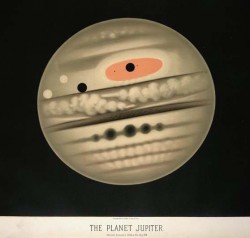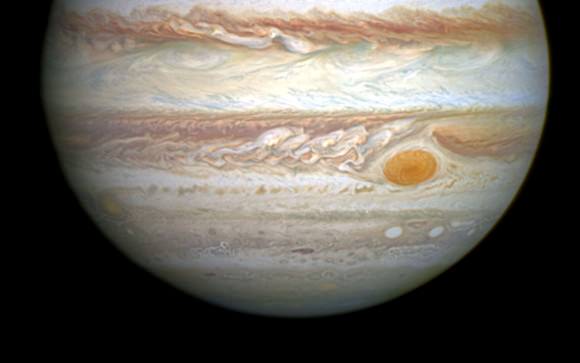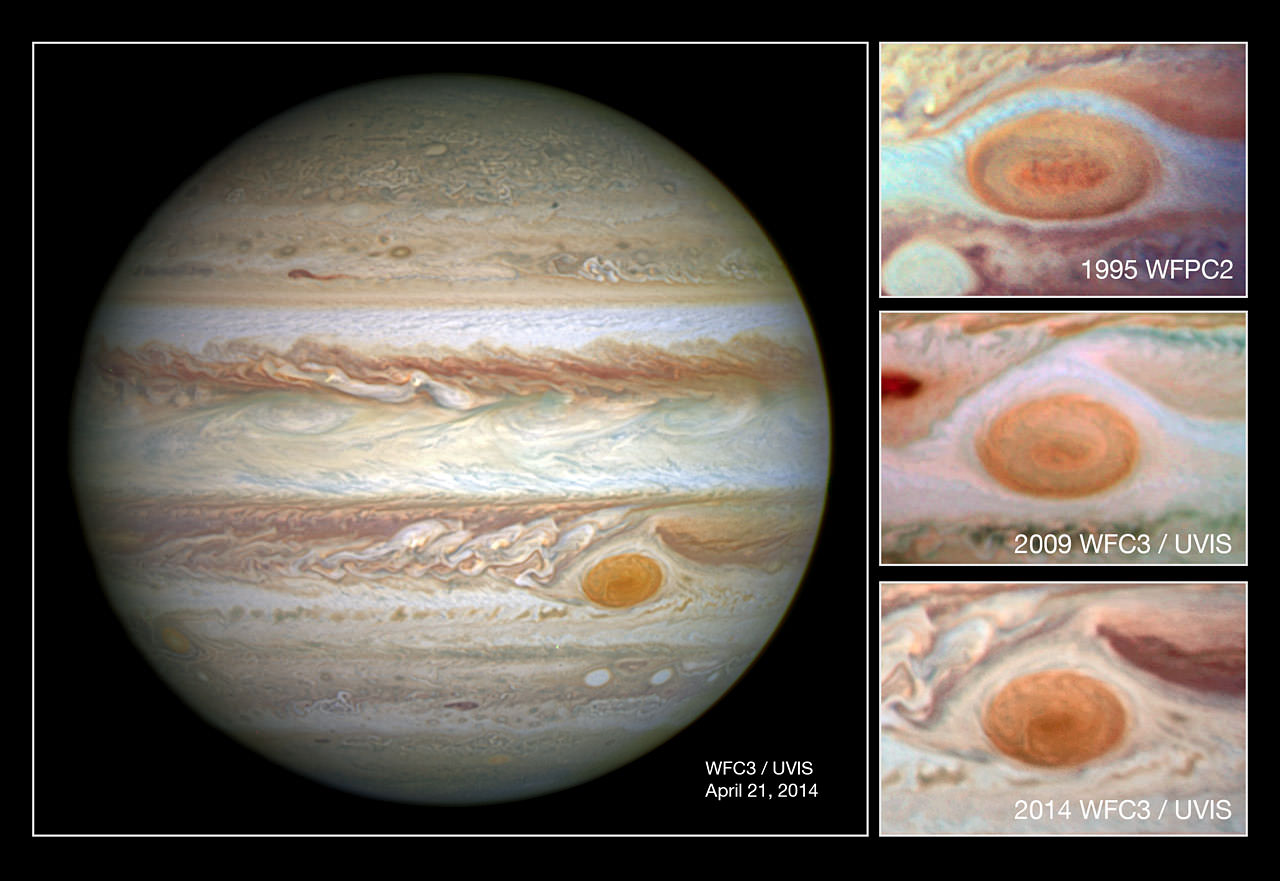Earlier this year we reported that amateur astronomers had observed and photographed the recent shrinking of Jupiter’s iconic Great Red Spot. Now, astronomers using the Hubble Space Telescope concur:
“Recent Hubble Space Telescope observations confirm that the spot is now just under 10,250 miles (16,500 km) across, the smallest diameter we’ve ever measured,” said Amy Simon of NASA’s Goddard Space Flight Center in Maryland, USA.

Using historic sketches and photos from the late 1800s, astronomers determined the spot’s diameter then at 25,475 miles (41,000 km) across. Even the smallest telescope would have shown it as a huge red hot dog. Amateur observations starting in 2012 revealed a noticeable increase in the spot’s shrinkage rate.
The spot’s “waistline” is getting smaller by just under 620 miles (1,000 km) per year while its north-south extent has changed little. In a word, the spot has downsized and become more circular in shape. Many who’ve attempted to see Jupiter’s signature feature have been frustrated in recent years not only because the spot’s pale color makes it hard to see against adjacent cloud features, but because it’s physically getting smaller.

As to what causing the drastic downsizing, there are no firm answers yet:
“In our new observations it is apparent that very small eddies are feeding into the storm,” said Simon. “We hypothesized that these may be responsible for the accelerated change by altering the internal dynamics of the Great Red Spot.”
A brief primer on Jupiter’s Great Red Spot
The Great Red Spot has been a trademark of the planet for at least 400 years – a giant hurricane-like storm whirling in the planet’s upper cloud tops with a period of 6 days. But as it’s shrunk, its period has likewise grown shorter and now clocks in at about 4 days.
The storm appears to be conserving angular momentum by spinning faster the same way an ice skater spins up when she pulls in her arms. Wind speeds are increasing too, making one wonder whether they’ll ultimately shrink the spot further or bring about its rejuvenation.
Definitely worth keeping an eye on.


It can only mean it’s going to turn into a star 😉
Only if another 80 Jupiters crash into it.
The GRS is a cyclonic storm. Jupiter is experiencing climate change. I’ll leave it to the reader to place the blame where it is, no doubt, due.
Had not been for Dr.Haywood’s actions back in 2010, Odyssey would have provided mountains of information on the GRS and the whole Jupiter system.
I hope we won’t have to wait another 45 to 47 years to learn more…
Climate change apparently not secondary to human activity. 🙂